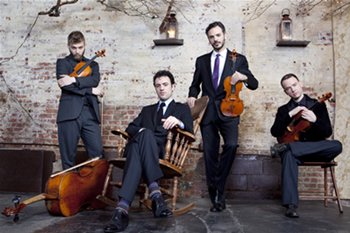It’s certainly not all sweetness and light.
Indeed, the Rodgers and Hammerstein shows set against war backgrounds – South Pacific, revived in New York last year in a new critical edition, and The Sound of Music, currently playing at Meredith College – contain some dark and troubling elements, the undercurrents of which are never far from the surface. This of course helps make those wonderful tunes and those often-insightful lyrics all the more poignant as the shows unfold. And with the benefit of hindsight, we know how they will end, so there’s no longer any possibility of unexpected denouements….
Opening night for The Sound of Music, given under the broad banner of Meredith Ensemble Theatre and involving a huge cast of players, techies, and instrumentalists, drew a nearly-full house (the Jones Auditorium balcony was not open). At the outset, director Catherine B. Rodgers received the NC Theatre Conference’s Herman Middleton Distinguished Service Award for all she’s done for so long for so many in the profession. She in turn recognized principals from productions of this show in 1971 and 1985. Much has changed since then, in terms of production techniques – this one used projections in lieu of drops – and chances are above average that this 2012 edition set all kinds of new standards.
For one thing, there was a (mercifully unamplified) orchestra of 23,* including ten strings – a luxury rarely found even in the largest Broadway houses nowadays. Jim Waddelow, Music Director of the Raleigh Symphony Orchestra, conducted, in the process coordinating (by phone) backstage and (with masterful baton work) on-stage business like the pro he has become. The singers were amplified, but only rarely was the electronic enhancement excessive, and never once did one feel compelled to cover the ears (or, worse yet, run from the hall), as is routinely the case in those big, generally overblown bus & truck shows given downtown.
We all know the story. What we may not know unless we attend one of these shows is how wonderfully well-meshed these performances are, how ideally well-timed, and how effective, dramatically and musically, too, the work of this cast of (mostly) young people on a fairly bare-bones stage is. It’s all quite nicely set, the cast is handsomely dressed, the diction is consistently outstanding (so there were virtually no missed lines), and the singing was as well-matched and well-balanced as one is likely to find anywhere.
The principals – Rose Turchi (as Maria), Maegan Coble (Mother Abbess), Steven Roten (Von Trapp), Christian Stith (Rolf), Meredith Davis (Elsa), and Mark Ridenour (Max) – looked, acted, and projected their respective roles with true ensemble skill, each clearly devoted to putting across the show rather than merely showing off – this being one of the virtues of not having any big “stars” in the production.
The children were exceptional in every way – and I say this as a person who saw and heard the “Trapp Family Singers” during their heyday in the US, post-WWII.** They are Emily Ahrens, Laura Beth Dawson, Arthur Larin, Olivia Parker, Evan Tylka, Emma Fornes, and Annabelle Roten. (And it may be worth noting that the youngest really is a child of Von Trapp – as given here!)
The scenic designs were by Curt Tomczyk, lighting, by Jim Frick, sound, by Brian Hunt, costume designs, by LeGrande Smith, and choreography, by Lacy Lowder. The stage manager was Michelle Henderson.
The printed program is a messy mix of too-small type (for the cast and bios), underlining and italics (in the list of musical numbers), boxed-in crew info, and the strangest layout of orchestra members I have ever seen.
That said, what’s important here is the show, and the show is amazing. Beat feet to those Meredith hills before it closes! (For details, see the sidebar.)
*Among the instrumentalists are two Meredith students who double as CVNC interns.
**For lots of historical info on the family – and for differences in the show and reality – see http://www.archives.gov/publications/prologue/2005/winter/von-trapps.html.











